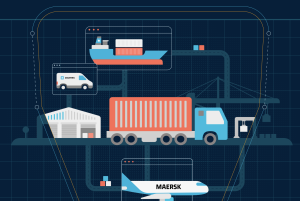Such a commitment leads organisations to carefully evaluate the risks versus the benefits when implementing their ESD strategies. However, only from the vantage of a holistic overview will organisations realise that it is the ultimate goal of participation around value creation, and not compliance, that will empower ESD initiatives and emerging suppliers alike, writes Wybrand Ganzevoort, Managing Director of Collection Value Creations.
“ESD success is based on relationship management. It is relationships built through a management culture of engagement, as opposed to a singular focus on statistical measurement, within the ESD chain, that
contribute to a higher success rate,” notes Ganzevoort. Enterprise Development (ED) ED differs from other forms of development, as it targets an organisation rather than an individual. A
vital distinction in the sustainability of an organisation must be based on the principle ‘a whole is greater than the sum of its parts’, or alternatively, the construction of an organisation is more important than the individual pieces. Investing in ED initiatives is generally done for one of two reasons, either commercial or positive societal change. Commercial investors ideally want a quick growth turn-around in order to maximise a return on their investment (ROI). On the other hand, societal rationale depends on long-term investment, whereby the benefits filter into society in order to stimulate economic activity. In the context of the Amended Codes of Good Practice, ED further targets regional, ethnic and gender criterion to achieve this goal. There are generally three methods used
to support ED, which range from training and mentorship, financial investment or creating a market need, to encouraging enhanced economic activity, whereby an organisation can ultimately thrive independently. The ED strategy of an organisation is usually linked to either an organisation’s supply chain, distribution chain or, alternatively, a specific area of social investment. It may ultimately reside in one of, or a combination of, the three different methods. Historically, investing in ED initiatives was outside an organisation’s core services or products, however, the implementation of the Amended Codes of Good Practice significantly substantiates the linkage with the value chain. Supplier Development (SD) When taking a holistic perspective, South Africa’s SD needs are slightly different than that of the rest of the world. The Amended Codes of Good Practice are addressing issues relating to small empowered suppliers, who are currently facing serious barriers in entering the supply chain of large enterprises. Barriers to overcome include quality of products and/or services, with an emphasis on volumes required at very low profit margins. Compounding these issues are EMEs and QSEs winning large scale tenders, whereby they do not have the support, infrastructure or financial resources to adequately deliver. Although the goal of SD focuses on empowerment, the issue of quality products and services, as well as financial sustainability and growth, is vital to organisations embracing SD. Preferential Procurement (PP) The ultimate goal of PP is to develop companies that will form an integral part of an organisation’s supply chain, consequently leading to transformed supply chains across South Africa. PP and ED go hand in hand. The raison d’être for this association is, when investing and supporting an ED initiative on the basis of ED alone, market demand and longevity may be overlooked, hampering the initial intent. On the other hand, by only considering PP the developmental cycle of a supplier might not be entirely considered, consequently resulting in a supplier’s inability to effectively deliver. Taking this into consideration, emphasis on supplier relationship management is critical. The historic mandate of a Procurement Department was to cement contracts
based on high volumes, timely delivery and complemented by discounts. This traditional method of procuring could be applied clinically, targeting the needs and benefits
of an organisation outside of its social ecosystem. However, as the Amended Codes of Good Practice are implemented, the role of procurement will evolve, as it forms a
critical part of an organisation’s transformation strategy. Supplier management will be the vital tool for establishing a credible, empowered supply chain, which ultimately adds value to an organisation’s offering. As the ESD element is vital to achieving a favourable level of compliance, the ‘trilogy’ making up this element must mould together and complement each other. The only way to achieve this is through supplier management; knowing your supplier, being aware of their capacity to deliver, identifying areas in need of development and building trust. Furthermore, it is essential to bear in mind that the foundation, globally, of all organisations is simple; long-term sustainability, growth and financial reward. Therefore, in order for transformation to take its rightful place, it is imperative that an ESD strategy finds the ‘golden thread’ which binds people, quality, profit and sustainability. This article first appeared in tfmmagazine.co.za Wybrand Ganzevoort, Managing Director of Collective Value Creation, specialises in the development and implementation of Enterprise and Supplier Development (ESD) strategies, with a specific focus on Lean Enterprise and Supplier Development. With a passion for entrepreneurial development and Transformation, he actively assists organisations in establishing and implementing workable ESD strategies, which deliver shared value in the South African Transformation arena. As an ESD practitioner, Wybrand has been privy to many internal meetings, where the tactics relating to ESD elements are brainstormed, analysed and thereafter implemented. Organisations, in general, realise the inherent benefit that ESD strategies can offer in extending the broad based footprint to impact many, as opposed to concentrating on the benefit to individuals. The developmental nature of ‘transformation’ becomes a complex process when we consider the overwhelming commitment within supply chains to receiving high-level quality, consistent delivery and cost effectiveness.
The developmental nature of ‘transformation’ becomes a complex process when we consider the overwhelming commitment within supply chains to receiving high-level quality, consistent delivery and cost effectiveness.


























